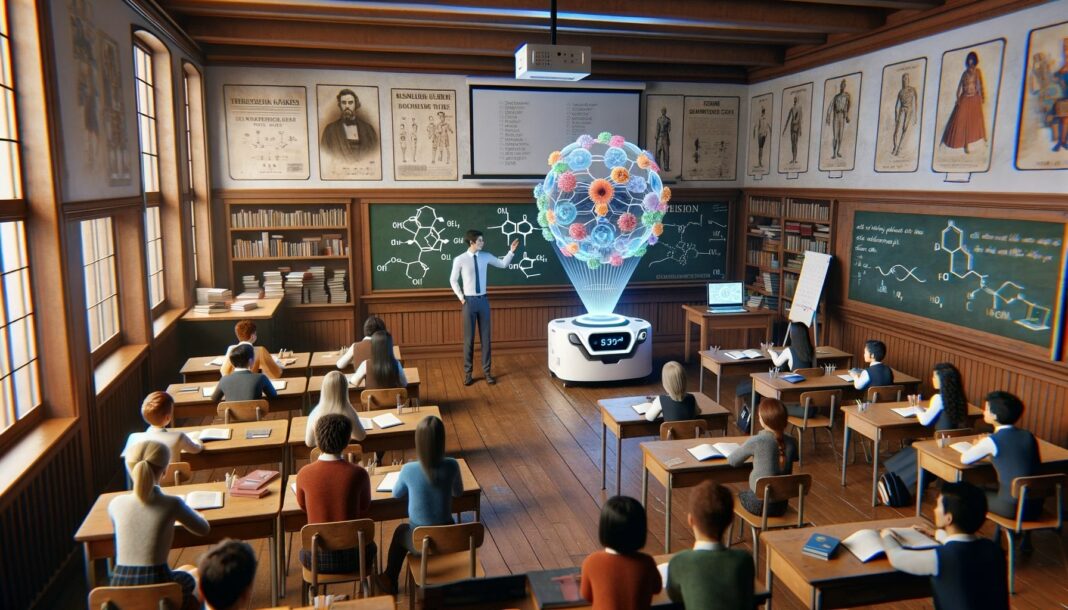Imagine a classroom where virtual reality and immersive technology bring textbooks to life, allowing students to explore the mysteries of the universe through 3D holograms, all while sitting in their seats. The teacher can now create an interactive and engaging learning environment for their students. This is the power of 3D holograms and virtual reality in the educational system – innovative technologies that are revolutionizing classroom learning experiences with 3D images. With holographic technologies, students can now experience personalized learning with interactive holographic projections. This enhances their learning experience by allowing them to engage with lifelike models and immersive content, going beyond static images and flat diagrams.
By incorporating 3d holograms into the education system, educators can create a dynamic learning environment that sparks curiosity and fosters deeper comprehension in the education process. Whether it’s dissecting a virtual frog or exploring ancient ruins in vivid detail, 3d holograms bring subjects to life in ways never before possible with immersive technology. Hologram technology displays an image that is truly immersive. Students can enhance their learning process by manipulating holographic projections, zooming in on intricate details using hologram technology, and gaining a comprehensive understanding of complex concepts through hands-on exploration of holographic technologies.
With the advancement of hologram technology, traditional classrooms are being transformed into interactive hubs of knowledge and discovery. The learning process is enhanced by the use of 3D holograms, allowing for endless possibilities in educational innovation and research. Join us as we delve into the exciting world of holographic education and explore how this cutting-edge technology is reshaping the learning process. Through our research, we have discovered the incredible potential of 3D holograms in enhancing the way we learn. These holograms provide a visual and interactive experience that allows students to grasp complex concepts and subjects more effectively. By incorporating holographic images into educational settings, we can revolutionize the learning process and create a more engaging and immersive environment for students.
Revolutionizing the education system with holographic displays
Disrupting Traditional Teaching Methods
Holographic displays have emerged as a groundbreaking technology that has the power to revolutionize the education system with 3D holograms. By introducing holographic images, holographic projection brings immersive and interactive experiences that disrupt traditional teaching methods in ways never seen before. These 3D holograms displays bring holographic images and hologram technology to life, allowing students to engage with educational content in a whole new dimension.
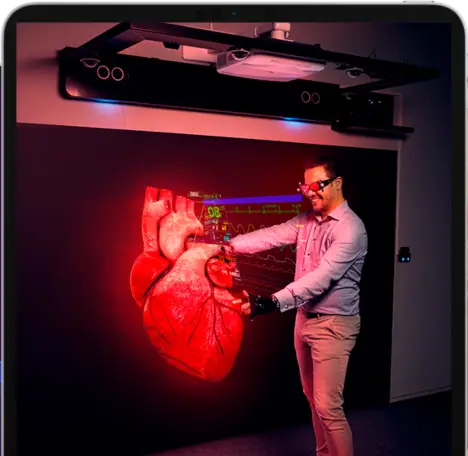
Transforming Classroom Dynamics
With 3D holograms and hologram technology, classroom dynamics are transformed into an exciting and dynamic environment. No longer confined to textbooks and static images, students can now interact with three-dimensional holograms that enhance their understanding of complex concepts. This hands-on approach encourages active participation and fosters a deeper level of comprehension among students, especially when incorporating holographic images and hologram technology to create 3D holograms.
Reshaping Learning and Teaching
The integration of holography revolutionizes the way both students learn and teachers teach, by introducing hologram technology and 3D holograms. Educators can utilize 3D holograms, an innovative technology, to create engaging lessons that captivate their students’ attention. With hologram technology, teachers can present information in a visually stimulating manner, making learning more enjoyable and memorable for students. Holographic displays enhance the learning experience by creating immersive and captivating visuals that engage students’ attention.
Entering a New Era in Education
The integration of hologram technology in education signifies the dawn of a new era. Holographic displays bring a new dimension to learning and engagement. As hologram technology becomes more prevalent in educational institutions worldwide, it has the potential to transform the entire education sector. Holography, with its hologram technology, opens up endless possibilities for delivering educational content across various subjects such as science, history, mathematics, and more.
Enhancing Educational Experiences
Holographic displays with hologram technology offer an unparalleled level of immersion that enhances educational experiences for both educators and students alike. For example, instead of simply reading about historical events or scientific phenomena from textbooks or watching videos on screens, students can witness these concepts come alive through realistic 3D visuals projected by holograms.
Empowering Educators
Holographic displays empower educators by providing them with powerful hologram tools to deliver impactful lessons. Teachers can utilize interactive holograms to demonstrate abstract concepts, conduct virtual experiments, and create simulations that allow students to explore and learn in a hands-on manner. This hologram technology enables educators to cater to different learning styles and engage students on a deeper level.
Stimulating Curiosity and Creativity
The introduction of holographic displays ignites curiosity and creativity among students, as they are fascinated by the hologram technology. By presenting information using hologram displays in an immersive and interactive way, these hologram displays ignite a sense of wonder and encourage students to think critically, ask questions, and explore further. This fosters a culture of curiosity that drives innovation, lifelong learning, and the exploration of hologram technology.
Widening Access to Education
Holographic displays have the potential to bridge educational gaps by widening access to quality education through the use of hologram technology. Many schools around the world face resource limitations or geographical constraints that hinder their ability to provide comprehensive educational experiences. However, with the advancement of technology, hologram technology has emerged as a potential solution for these challenges. By integrating holography into classrooms, these barriers can be overcome, allowing students from diverse backgrounds to benefit from innovative teaching methods.
Leading Providers of Holographic Display Technology in Education (2023)
Here is a list of companies providing holographic displays, primarily in the education sector, along with a description of their products and links to their websites:
- HYPERVSN
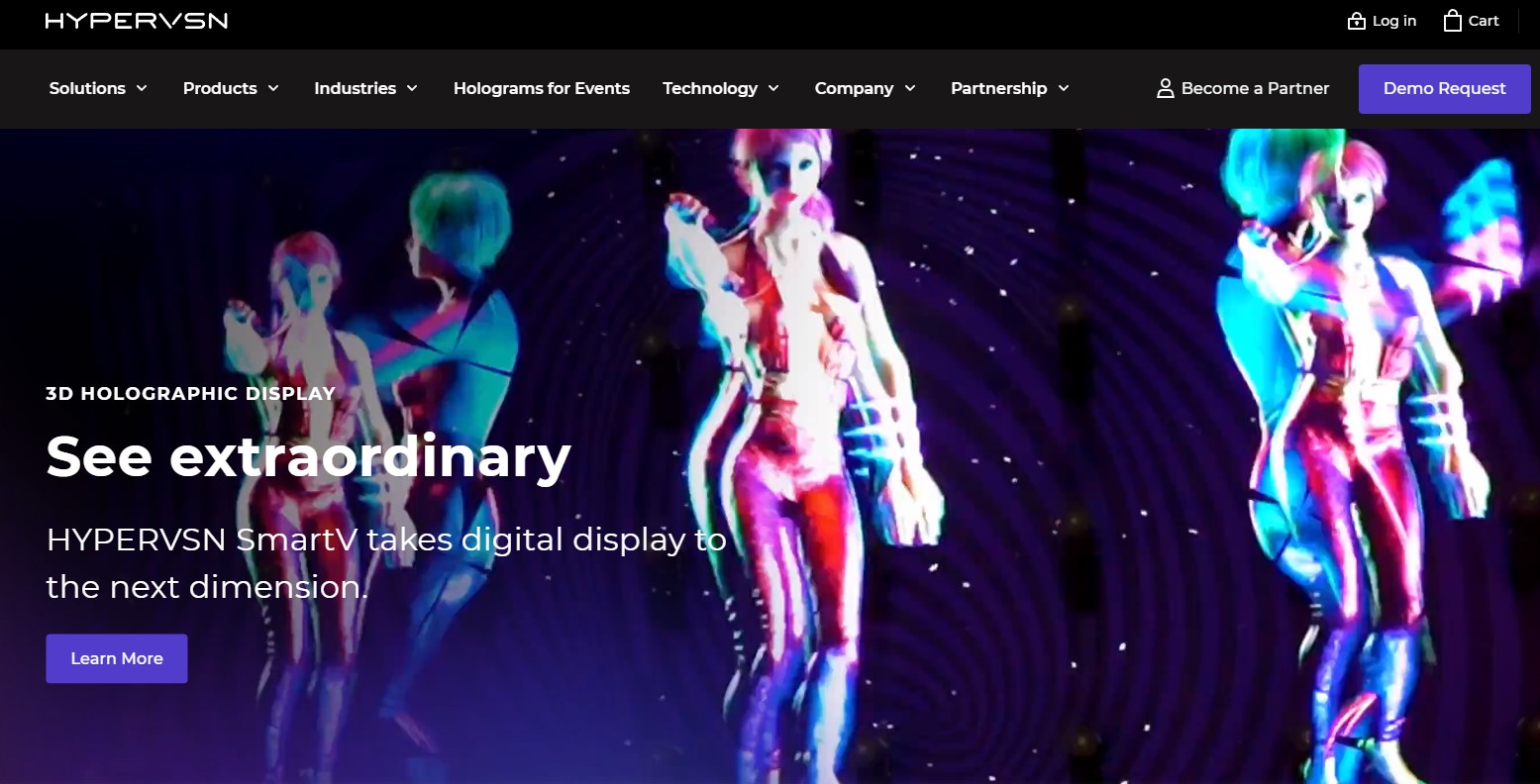
HYPERVSN - Description: Founded in 2011, HYPERVSN is a British technology company offering 3D holographic visuals without headgear. Their products include HYPERVSN Solo, displaying 3D visuals up to 75cm in size, and HYPERVSN Wall for larger displays. They also have a life-size 3D human display and a 3D studio for creating holographic visuals.
- Website: hypervsn.com
- VividQ
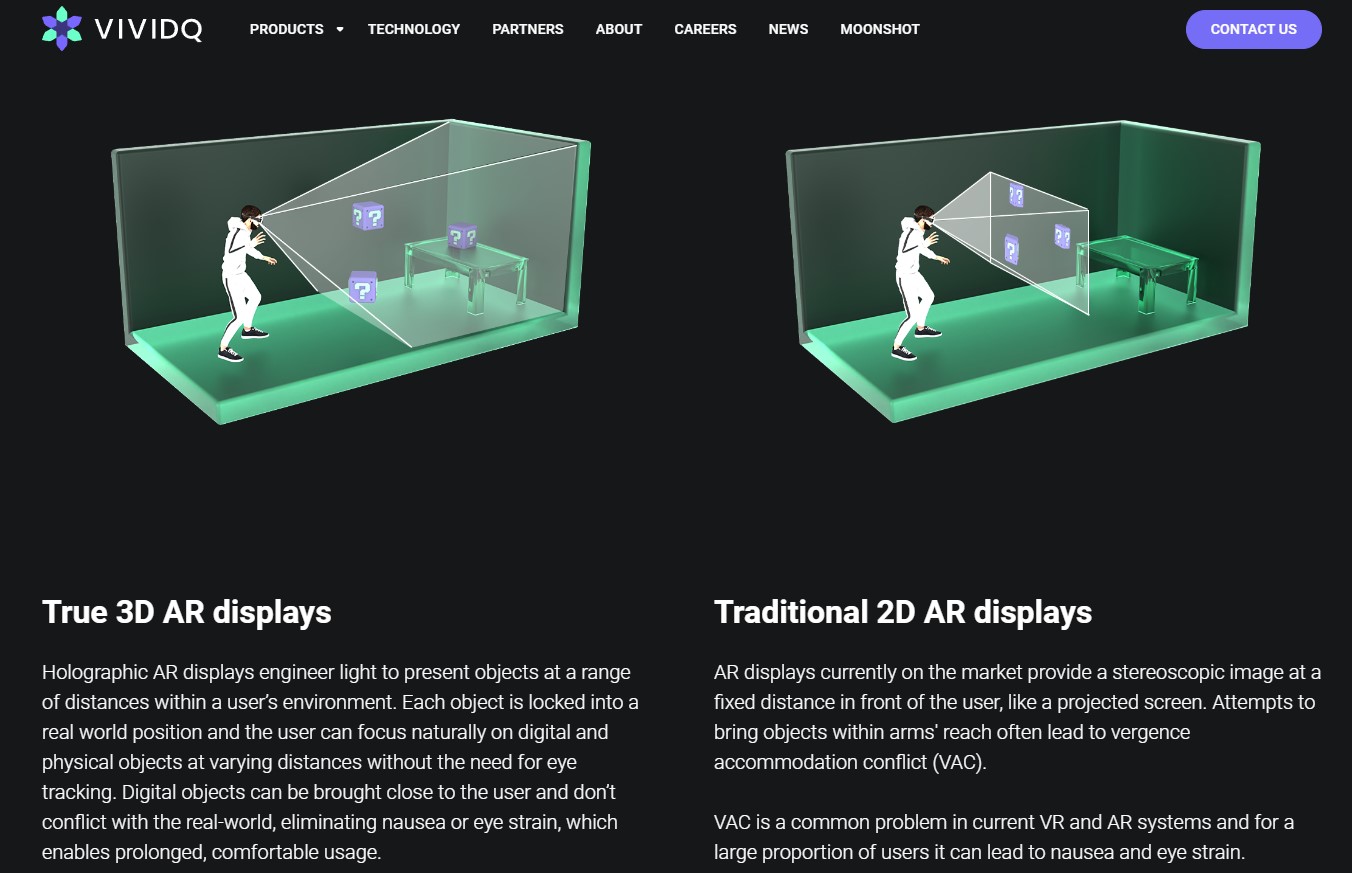
VIVIDQ - Description: Established in 2017, VividQ specializes in computer-generated holography, aiming its technology at head-mounted displays, automotive HUDs, and smart glasses. Their Holographic LCD Development Kit enhances 3D visual experience on devices like smartphones, laptops, and tablets.
- Website: vivid-q.com
- MDH (Magical Dynamic Hypnotic) Hologram Ltd

MDHHologram - Description: Since 2002, MDH Hologram Ltd has been a leader in holographic technology. Their EyeMagic is a premium product that allows audiences to view from any angle, maintaining the magic’s hidden aspect. They also offer 3D studios, TelePresence, and various other holographic products.
- Website: mdhhologram.com
- SeeReal Technologies

SEEREAL - Description: Founded in 2002 and based in Dresden, Germany, SeeReal Technologies focuses on 3D display solutions. They have developed a 3D holographic imaging technology that offers comfortable and natural eye focus at proper depth without causing headaches or eye fatigue.
- Website: seereal.com
- LitiHolo

LitiHolo - Description: LitiHolo, a division of Liti Holographics, provides kits to K–12 schools, colleges, and other organizations, enabling students to create their own holograms.
- Website: litiholo.com
- Imperial College Business School
- Description: While not a traditional provider of holographic technology, the Imperial College Business School in London has used holographic speakers for events, indicating potential educational applications.
- Website: imperial.ac.uk
- Google (Project Starline)
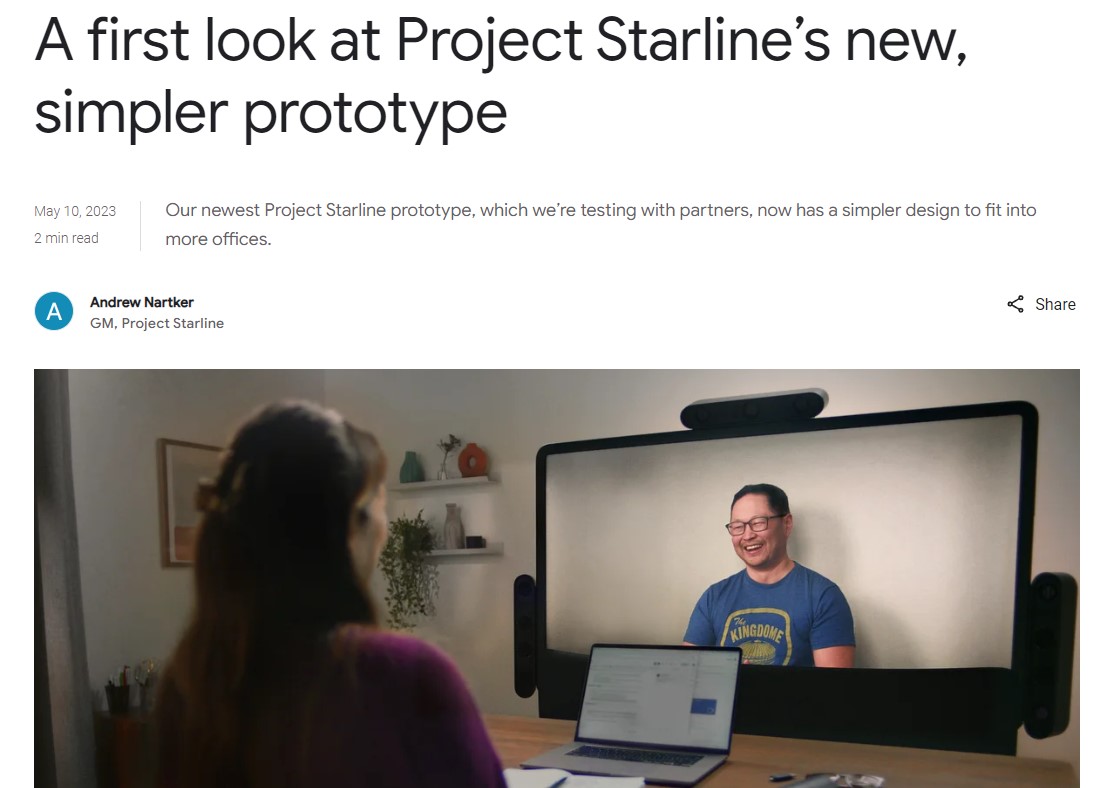
- Description: Under Project Starline, Google combines technologies like computer vision, 3D displays, machine learning, and real-time compression for immersive communication experiences, suggesting potential educational applications.
- Website: Project Starline on Google Blog
Advantages of holograms in enhancing learning experiences
Multisensory Learning Experience
Holograms provide a revolutionary approach to classroom learning by offering a multisensory experience. Unlike traditional teaching methods that rely primarily on textbooks and lectures, holographic displays engage students through visual, auditory, and tactile elements. This immersive environment captures their attention and stimulates multiple senses simultaneously.
Enhanced Comprehension
The combination of visual, auditory, and tactile elements in holographic displays leads to better comprehension among students. By presenting information in a three-dimensional format, holograms enable learners to visualize complex concepts more easily. The ability to see objects from different angles enhances spatial understanding and facilitates deeper comprehension of abstract ideas.
Active Participation and Knowledge Retention
Interactive holography fosters active participation in the learning process. Students can manipulate virtual objects or interact with holographic simulations, making the educational experience more engaging and hands-on. This level of interactivity encourages students to take an active role in their own learning journey, leading to improved knowledge retention.
Personalized Learning Opportunities
One of the key benefits of holograms in education is the ability to customize content according to individual student needs. With personalized holographic content, educators can tailor lessons based on each student’s strengths, weaknesses, and learning style. This customization ensures that students receive targeted instruction that caters specifically to their requirements.
Real-World Application
Holographic displays bring real-world scenarios into the classroom, allowing students to explore subjects beyond theoretical concepts. For example, medical students can examine detailed 3D models of human anatomy or witness surgical procedures through holography. This practical application helps bridge the gap between theory and practice, preparing students for real-life situations they may encounter in their future careers.
Collaboration and Communication Skills
Holographic displays encourage collaboration among students as they work together on projects or solve problems using shared virtual spaces. By fostering teamwork and communication skills, holograms prepare students for the collaborative nature of the modern workplace. The ability to effectively communicate and cooperate with others is a valuable skill that extends beyond the classroom.
Motivation and Engagement
The captivating nature of holographic displays naturally sparks student interest, increasing motivation and engagement in the learning process. When students are excited about what they are learning, they become more active participants, leading to improved academic performance. Holograms have the power to transform education into an exciting and enjoyable experience for both students and teachers.
How holograms improve visualization and understanding in education
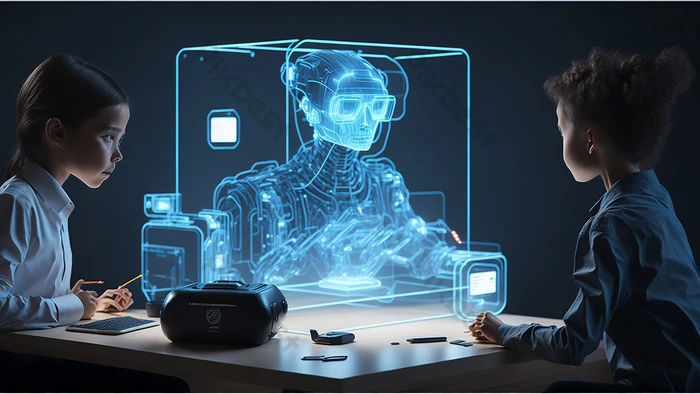
Complex Concepts Made Simple
Visual representation plays a crucial role in making complex concepts easier to grasp. Holograms, with their realistic 3D models, bring abstract ideas to life in an engaging and tangible way. Instead of relying solely on textbooks or static images, students can now visualize intricate concepts through holographic displays.
Bringing Abstract Ideas to Life
Holography has the power to transform abstract ideas into vivid, lifelike experiences. With holograms, students can explore subjects like biology, chemistry, or physics with a level of realism that was previously unimaginable. For example, instead of reading about the structure of DNA or the formation of galaxies, students can now witness these phenomena firsthand through holographic simulations.
Enhancing Critical Thinking Skills
By visualizing data and processes using holographic displays, students are encouraged to think critically and analytically. They can observe how different variables interact and understand complex relationships more effectively. This enhanced visualization promotes deeper understanding and allows students to develop essential problem-solving skills.
Bridging the Gap Between Theory and Practice
Holographic simulations bridge the gap between theoretical knowledge and practical application. Students no longer have to rely solely on their imagination when trying to comprehend abstract concepts or envision real-world scenarios. With holograms, they can experience hands-on learning without leaving the classroom.
Imagine studying ancient history and being able to walk through virtual recreations of historical sites or witnessing pivotal moments in time through realistic holographic representations. These immersive experiences not only make learning more enjoyable but also foster a stronger connection between theory and practice.
In addition to historical contexts, holography is revolutionizing fields such as medicine and engineering education by providing students with opportunities for virtual dissections or interactive engineering design projects.
Applications of holograms in exam preparation and concept comprehension
Holographic displays have revolutionized classroom learning experiences by offering practical applications in various educational domains. One significant area where holograms prove to be invaluable is in exam preparation and concept comprehension. Let’s explore how holograms are enhancing the learning process for students.
Holograms aid in reviewing complex topics before exams
Holographic displays provide a unique advantage. Students can now visualize abstract ideas and difficult-to-grasp subjects through interactive 3D holographic images. This immersive experience helps them review intricate topics more effectively, making the revision process less daunting.
Students can interact with virtual objects to reinforce their understanding
Unlike traditional textbooks or 2D diagrams, holography allows students to engage with virtual objects projected as three-dimensional images. This interaction enables them to gain a deeper understanding of the subject matter by exploring different angles, zooming in on details, and manipulating virtual objects. As a result, students can solidify their grasp on complex subjects and enhance their overall comprehension.
Exam revision becomes more engaging through interactive holography tools
Hologram-based tools offer an innovative approach to exam revision that goes beyond passive reading or note-taking. With the help of augmented reality (AR) and mixed reality (MR) technologies, students can actively participate in the learning process through interactive simulations and gamified content. These engaging activities make exam preparation more enjoyable while reinforcing key concepts effortlessly.
Hologram-based quizzes help assess students’ knowledge effectively
Assessment is an integral part of any educational process, and holography provides a novel technique for evaluating students’ understanding. By incorporating hologram-based quizzes into exams or assignments, educators can assess students’ knowledge more effectively. These quizzes can test not only factual recall but also conceptual understanding through interactive scenarios presented via holographic displays.
Enhancing remote learning and collaboration through holographic technology
Holography Enables Seamless Remote Collaboration Among Students and Teachers
Holographic technology has the potential to revolutionize remote learning by enabling seamless collaboration among students and teachers. With the integration of holograms, learners can engage in real-time discussions, presentations, and group projects regardless of their physical location. This immersive experience transcends the limitations of traditional video conferencing, allowing participants to interact with 3D visuals that enhance information retention and understanding.
Pros:
- Holographic technology creates an engaging and interactive learning environment.
- Students can collaborate effectively on projects despite being physically distant.
- Teachers can provide dynamic visual demonstrations that enhance comprehension.
Cons:
- The adoption of holographic technology may require initial investments in infrastructure and equipment.
- Limited availability of holographic devices may hinder widespread implementation.
Virtual Classrooms Create an Immersive Remote Learning Environment
By leveraging holographic technology, virtual classrooms offer a unique opportunity for students to immerse themselves in a remote learning environment. These virtual spaces simulate a traditional classroom setting, complete with interactive whiteboards, digital textbooks, and live lectures conducted by teachers or subject matter experts. Learners can actively participate in discussions, ask questions, and receive immediate feedback from their peers or instructors.
Pros:
- Virtual classrooms promote active engagement among students.
- Learners have access to a variety of multimedia resources that enhance comprehension.
- Real-time interaction fosters a sense of community among remote learners.
Cons:
- Reliable internet connectivity is crucial for seamless participation in virtual classrooms.
- Technical issues or glitches may disrupt the learning experience for some students.
High-Quality Video Conferencing Is Enhanced by Integrating 3D Visuals
Traditional video conferencing platforms have become essential tools for remote communication. However, they often lack the ability to convey complex concepts effectively. By integrating holographic technology, video conferencing can be elevated to a whole new level. Participants can share 3D visuals, models, and simulations in real-time, providing a deeper understanding of the subject matter.
Pros:
- Holographic visuals enable clearer communication and enhance comprehension.
- Complex ideas and concepts can be easily conveyed through interactive 3D presentations.
- Visual aids foster active engagement during remote meetings or lectures.
Cons:
- Bandwidth requirements may increase when incorporating high-quality holographic visuals.
- Not all devices or platforms may support the integration of holograms.
Holoportation Allows Real-Time Interaction Between Distant Learners
Holoportation, a groundbreaking application of holographic technology, enables real-time interaction between distant learners. Imagine being able to virtually transport yourself into a classroom or lecture hall without physically being there. Holoportation utilizes cloud computing and advanced imaging techniques to capture and transmit three-dimensional representations of individuals, allowing them to participate in remote learning experiences as if they were present physically.
Pros:
- Holoportation eliminates geographical barriers and expands educational opportunities.
- Remote learners can engage in live discussions and collaborate seamlessly with their peers.
- Real-time interaction fosters a sense of presence and connection among participants.
Cons:
- The current capacity for holoportation is limited by technological constraints.
- High-speed internet connections are necessary for smooth holoportation experiences.
Holographic technology has the potential to transform remote learning by enhancing collaboration, creating immersive environments, improving video conferencing capabilities, and enabling real-time interaction between distant learners.
Holographic telepresence: A game-changer for communication in education
Holographic telepresence is revolutionizing communication in education, bringing a touch of science fiction into the classroom. With this technology, students can experience virtual guest lectures from experts worldwide, explore historical sites and museums through holograms, participate in class discussions remotely using holographic avatars, and even benefit from real-time language translation.
Imagine sitting in your classroom while a renowned scientist or historian appears as a life-sized hologram to deliver an engaging lecture. Holographic telepresence allows educators to invite experts from around the globe to share their knowledge and experiences with students, breaking down geographical barriers and providing access to diverse perspectives. This interactive learning environment sparks curiosity and enhances engagement by offering a unique way of delivering educational content.
Through holographic telepresence, students can virtually visit historical sites and museums without leaving the classroom. They can walk through ancient ruins, examine artifacts up close, and immerse themselves in different cultures through realistic holograms. This hands-on approach to learning brings history to life and creates memorable educational experiences that go beyond traditional textbooks.
For remote students who are unable to physically attend classes, holographic avatars offer a solution. These avatars allow students to participate in class discussions as if they were present in the room. By projecting their presence through a hologram, they can actively engage with their peers and contribute to group activities. This inclusion of remote students fosters collaboration and ensures that everyone has an equal opportunity to participate in the learning process.
One of the significant advantages of holographic telepresence is its ability to facilitate real-time language translation. Language barriers often hinder effective communication between individuals from different linguistic backgrounds. However, with this technology, conversations can be translated instantly using holograms equipped with language translation capabilities. This feature promotes cross-cultural understanding and enables seamless communication among students from diverse linguistic backgrounds.
While holographic telepresence offers numerous benefits for education, there are some challenges to consider. The cost of equipment and implementation can be a barrier for many educational institutions. Ensuring reliable and high-quality holographic communication requires advanced technology and infrastructure. However, as the technology evolves and becomes more accessible, these challenges are likely to diminish.
Ensuring data privacy and security in holographic education
Strict Protocols Safeguard Student Data During Hologram Usage
In the realm of holographic education, student data privacy is of paramount importance. Educational institutions have implemented strict protocols to ensure that sensitive information remains protected during hologram usage. These protocols include measures such as limiting access to authorized personnel only and implementing secure data transmission channels.
Encryption Techniques Protect Sensitive Information in Holographic Systems
To safeguard student data from unauthorized access or tampering, encryption techniques are employed in holographic systems. By encrypting the data, it becomes virtually impossible for anyone without the proper authorization to decipher or use the information. This ensures that personal details and educational records remain confidential and secure.
Secure Authentication Prevents Unauthorized Access to Educational Content
An essential aspect of ensuring data privacy in holographic education is secure authentication. Students and educators are required to authenticate themselves before accessing any educational content through holograms. This authentication process can involve various methods, such as biometric identification or unique login credentials, which add an extra layer of security and prevent unauthorized individuals from gaining access to sensitive information.
Compliance with Privacy Regulations Ensures the Safety of Student Data
Educational institutions utilizing holographic displays prioritize compliance with privacy regulations to guarantee the safety of student data. These regulations outline specific guidelines regarding the collection, storage, and usage of personal information. By adhering to these regulations, institutions demonstrate their commitment to maintaining high standards of data privacy and protecting students’ rights.
Holographic displays revolutionize classroom learning experiences
In today’s rapidly evolving world, traditional teaching methods are being challenged by innovative technologies that have the potential to transform education. One such technology is holographic displays, which are revolutionizing classroom learning experiences. Imagine a classroom where students can interact with three-dimensional holograms, bringing complex concepts to life right before their eyes. This immersive and engaging approach not only enhances understanding but also sparks curiosity and creativity.
By incorporating holographic displays into education, students can visualize abstract ideas in a tangible way, making even the most challenging subjects more accessible and enjoyable. Whether it’s exploring the human anatomy or diving into historical events, holograms provide a dynamic platform for interactive learning. Moreover, these displays offer opportunities for remote collaboration and communication among students from different locations, fostering a sense of connection and breaking down geographical barriers.
To embrace this exciting future of education, it is essential for schools and institutions to invest in holographic technology and equip educators with the necessary tools and training. By embracing this revolutionary approach to learning, we can empower students with the skills they need to thrive in an increasingly digital world. So why wait? Join the holographic revolution and unlock limitless possibilities for transforming classroom learning experiences.
FAQs
Can holographic displays be used across all subjects?
Yes! Holographic displays have applications across various subjects including science, mathematics, history, art, and more. They provide a versatile platform for visualizing complex concepts in an interactive manner.
Are holographic displays expensive?
While initial investments may seem significant, the cost of holographic displays has been decreasing as the technology advances. Considering the long-term benefits they offer in terms of enhanced learning experiences and improved student engagement, they are well worth the investment.
Can holograms replace traditional teaching methods entirely?
Holograms should be seen as a powerful tool that complements traditional teaching methods rather than replacing them entirely. They provide an additional layer of engagement and interactivity, enhancing the overall learning experience.
Are holographic displays suitable for all age groups?
Yes! Holographic displays can be adapted to suit learners of all ages, from kindergarten to higher education. The level of complexity and content can be adjusted accordingly to cater to different age groups and educational needs.
How can educators incorporate holographic displays into their teaching?
Educators can integrate holographic displays into their teaching by using pre-designed holograms or creating custom content that aligns with their curriculum. They can encourage students to explore and interact with holograms during class activities and assignments.
